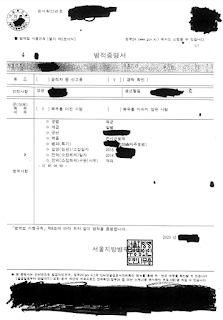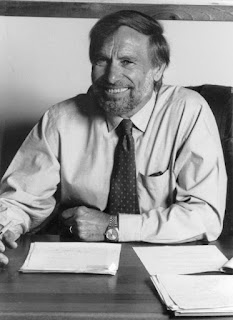드라마『우영우』의 자폐 스펙트럼 장애 개념 왜곡
요약:
드라마 『이상한 변호사 우영우』( ENA 2022)는 예술작품의 문법 및 예술성과는 무관한 이유로 시청자에게 '자폐 스펙트럼 장애'를 해설하지만, 스펙트럼 개념,자폐 스펙트럼 장애 진단명의 이유, 정통적인 자폐증 개념, 언어적 의미를 왜곡하고 있습니다. 이런 왜곡은 예술성이라는 목표를 달성하기 위해 발생하는 불가피함에서 발생하지 않았습니다. 이런 왜곡 때문에 자폐증 및 자폐 스펙트럼 장애에 대해 근거없는 주장이나 일반화를 주장한 후 "스펙트럼"이라고 우길 수 있게 되었습니다.
자폐증 여부의 증명
글쓴이는 자폐증이 있는 자폐 스펙트럼 장애 당사자이며 진단을 받기 전엔 자폐증이란 개념 자체를 인지하지 못했습니다. 그런 사실을 입증하는 증거들을 아래에서 제시합니다.
사진1 병적증명서: 글쓴이는 '2급' 현역으로 판정받아 2013년에 육군에서 155MM자주포병으로 복무하는 도중 복무가 완전히 불가능하다고 판정받아 2014년에 '5급' 전시근로역(제2국민역)으로 판정이 변경되었다. (사회적으로 '면제'로 인정받는 판정) 당시에 글쓴이는 자폐증에 대한 개념을 전혀 인지하지 못했음위와 같은 자료를 제시하여 글쓴이가 자폐증 당사자가 맞음을 입증합니다.
1
드라마 『이상한 변호사 우영우』( ENA 2022)는 예술식 문법 및 예술성과는 전혀 무관한 이유로 시청자에게 해설을 합니다. 주인공 우영우는 3화에서 다음과 같이 해설합니다.
"자폐의 공식적인 진단명은 자폐 스펙트럼 장애입니다. 스펙트럼이란 단어에서 알 수 있듯 자폐인은 천차만별입니다. 고래처럼요."(『이상한 변호사 우영우』3화, ENA 2022.06.29)
그러나 이것은 "자폐 스펙트럼 장애"라는 공식적인 진단명에 대한 명백한 왜곡입니다.
스펙트럼 장애란 개념은 자폐증에 한정된 개념이 아닙니다. 의료 행위에는 기본적으로 임삼 양상에서 큰 이질성이 수반되며 교과서에나 나오는 전형적인 예시는 실제 임상에서 드물며 오히려 전형을 벗어나는 것이 일반적입니다. 우울장애(우울증), 양극성장애, 자폐증, 기분장애, 사회적 불안장애, 공황장애, 강박장애, 외상 후 스트레스 장애, 조현병에 모두 스펙트럼이 있습니다.각주1
스펙트럼이란 개념은 자폐증 및 자폐 스펙트럼에만 해당하는 특수한 개념같은 것이 아닙니다.
자폐 스펙트럼 장애란 진단명은 APA(American Psychiatric Association)에서 발간한 『정신질환의 진단 및 통계 편람 제5판』 (DSM-5)에서 공식화된 진단명으로, 자폐성 장애,아스퍼거 장애, 달리 분류되지 않는 전반적 발달장애(PDD-NOS)라는 진단명을 '자폐 스펙트럼 장애'라는 진단명으로 통합한 진단개념입니다. (통합된 개념 중 압도적인 주류는 자폐성 장애나 아스퍼거 장애가 아닌 PDD-NOS입니다. 자폐증으로 부르지 않았던 진단명이 압도적인 주류입니다.) 이런 진단명으로 통합된 이유는 자폐증 및 자폐 스펙트럼이 특별한 '스펙트럼 장애'이기 때문이 아니라 진단의 일관성 및 정확성, 의료적 효율성 때문입니다.
2013 American Psychiatric Association의 공식 입장문: "정신질환의 진단 및 통계 편람 제5판 (DSM-5)의 가장 중요한 변경 사항 중 하나는 자폐 스펙트럼 장애(ASD)입니다. 개정된 진단은 자폐증 관련 장애가 있는 개인을 진단하는 방법에서 새롭고 더 정확하며 의학적으로나 과학적으로 유용합니다.
DSM-IV를 사용하면 환자는 자폐성 장애, 아스퍼거 장애, 아동기 붕괴 장애, 달리 분류되지 않는 전반적 발달장애의 포괄적인 진단 등 네 가지 개별 장애로 진단될 수 있습니다. 연구자들은 이러한 별도의 진단이 여러 진료소와 치료 센터에서 일관되게 적용되지 않는다는 사실을 발견했습니다. DSM-IV에서 4가지 전반적 발달 장애(PDD) 중 하나로 진단받은 사람은 여전히 DSM-5 또는 다른 보다 정확한 DSM-5 진단의 ASD 기준을 충족해야 합니다. DSM은 정신 장애에 대해 권장되는 치료 및 서비스를 개략적으로 설명하지 않지만, 정확한 진단을 결정하는 것은 임상의가 환자에 대한 치료 계획을 정의하는 첫 번째 단계입니다. "각주2
"Catherine Lord 박사와 미국 전역의 임상 연구자 그룹이 2012년에 실시한 한 연구는 센터마다 자폐장애와 아스퍼거 장애, 상세 불명의 전박전 발달장애(PDD-NOS)라는 진단을 어떻게 내리는지 보여주었습니다. 어떤 클리닉에서는 거의 모든 어린이에게 자폐장애라는 진단을 내렸고, 다른 두 진단은 거의 사용하지 않았습니다. 어떤 클리닉에서 상세 불명의 전반적 발달장애(PDD-NOS)가 가장 흔했고, 어떤 센터에서는 아스퍼거 장애가 표본의 절반을 차지했습니다. 같은 나라에서 지역이 다르다고 세 가지 상태의 비율이 실제로 그렇게 다를까요? 이 연구는 장소가 달라도 어린이들은 비슷하다는 것을 분명히 보여주었습니다. 언어와 지능, 자폐증 행동의 심각도가 비슷한 수준이었습니다. 지역마다 아이들의 자폐 장애와 아스퍼거 장애, 상세 불명의 전반적 발달장애(PDD-NOS) 비율이 다르다는 것은 사실이 아닙니다. 한 센터와 다른 센터의 차이는 주로 임상의가 라벨을 어떻게 적용했는지, 센터마다 선호하는 진단이 있는지에 달려있었습니다. DSM-IV를 사용한 20년 동안 세계 곳곳에서 이런 현상이 일어났을 것입니다.
이러한 일은 가족에게 혼동을 줄 뿐 아니라, 자녀를 보살피는 데 부정적 결과를 가져왔습니다. 미국 일부나 다른 국가에서 아스퍼거 증후군 진단을 받은 사람은 자폐증 환자보다 제도적으로 훨씬 적은 서비스를 받아야 했습니다. 두 질환이 같은 상태이고, 같은 장애를 공유하는데, 어떤 사람에게는 모든 범위의 개입을 제공하고 다른 사람에게는 서비스를 허락하지 않는 것을 불공평합니다. 전문가들은 DSM-5가 이러한 불평등을 해결하기를 희망합니다.
…DSM-5에서 당신 자녀 같은 사람은 자폐 스펙트럼 장애(ASD) 진단에 속합니다.DSM-IV에는 전반적 발달장애(PDD)와 다섯 가지 특정 진단의 범주가 있었지만, DSM-5는 단일 진단인 ASD를 사용합니다. DSM-IV는 12가지 증상 목록이 있으며, 다섯가지 PDD 진단에 서로 다른 패턴이 필요했습니다. 따라서 2,688가지의 다른 방식이 있게 됩니다! 이것은 사람마다 엄청난 다양성이 있고, 진단명이 같은 두 사람이 단 하나의 증상도 공유하지 않을 수 있다는 뜻입니다. DSM-5에서는 증상 목록이 일곱 개로 간소화되었습니다. ADS 진단을 받으려면 이 가운데 적어도 다섯 개 증상을 나타내야 합니다. 즉, DSM-IV와는 달리 어린이가 보여줄 수 있는 패턴은 여섯 가지 뿐입니다. 이러한 임상의에게 진단 과정이 훨씬 수월할 것이고, 신뢰도도 높아질 것입니다. 이제는 진단명이 하나뿐이라 DSM-IV를 적용할 떄보다 두 명의 의사에게 같은 진단을 받을 확률이 훨씬 커졌습니다. 가족들은 Seth의 부모가 한 질문(한 의사는 자폐증이라고 하고, 다른 의사는 아스퍼거 증후군이라고 하는 까닭)에 직면할 필요가 없습니다.
…이것이 DSM-5의 새로운 혁신입니다. 저자들은 걸음마기에서 성인까지, 언어가 유창한 경우에서 비언어적인 것까지, 가벼운 상태에서 심한 상태까지 모든 사람에게 증상을 적용할 수 있게 했습니다. DSM-IV와는 달리 DSM-5에서는 증상을 특정 행동이 "그 기능 능력이 결핍(lack of)"된 것으로 보다는 "그 양이나 질이 부족(deficit in)"한 것으로 봅니다. 따라서 고기능 어린이에 쉽게 적용할 수 있게 되었습니다. 임상의들은 DSM-IV에서 DSM-5로 바뀌며 그들의 예상과 반대로 많은 경우에서 어린이의 진단이 쉬워진 것에 놀랐습니다." 각주8
우영우가 설명했던 "천차만별"이란 이유 때문이 아닙니다. 이것이 일부 학자의 주장일 수는 있어도 공식적인 진단명으로 결정된 이유는 아닙니다.
2
"천차만별"이라는 개념은 "자폐 스펙트럼" 개념과는 무관하며, 레오 카너가 정립했던 정통적인 자폐증 논문에서도 포함되던 개념입니다. 레오 카너는 (자폐 스펙트럼이란 개념이 전혀 존재하지 않은 시기) 이미 1944년에 "개별 환자들 사이에는 장애의 정도, 특정적인 특징의 발현, 시간 경과에 따른 단계적 발달에 큰 차이가 있다"고 썼습니다.각주3
또한 레온 아이젠버그와 레오 카너가 1956년에 발표한(자폐 스펙트럼이란 용어개념이 전혀 존재하지 않음) 자폐증 연구 논문에 따르며, 정통적인 개념의 자폐증 당사자였던 Robert F.는 해군에서 일하는 기상학자가 됐으며, 결혼해서 어린 아들까지 낳았으며, 작곡가였습니다. 각주4
또한 레오 카너가 1971년에 발표했던 연구논문에는 최초의 자폐증 진단 당사자를 소개합니다. 정통적인 의미의 의학적인 자폐증을 최초로 진단받았던(현재 주요 자폐증과 자폐 스펙트럼 장애의 주욕 근원이 되는 대상) Donald T.는 1958년에 프랑스어 전공으로 학사학위를 받고 대학을 졸업했고, 지역 은행에서 정규직으로 일했고, 자동차를 소유해서 운전을 하고 다니며, 다양한 지역사회 활동에 참여하며 마을 사람들에게 존경을 받았습니다. 두번째로 자폐증 진단을 받은 Frederick W. 직업 훈련을 받고 정규직이 되었으며, 상사에게 '매우 신뢰할 수 있고, 철저하고, 동료 직원에 대해 사려 깊은 사람'이라고 평가받았습니다. 각주5
최초의 자폐증 진단을 받은 당사자 사이에서도 이런 결과가 나왔습니다. 하지만 드라마 『우영우』는 자폐 스펙트럼 장애라는 진단명을 자의적으로 사용해서 '자폐는 (다른 정신질환과 다르게) 특수하다'는 잘못된 정보를 전달합니다.
3
또한 드라마 『우영우』는 한국의 일상언어에서 말하는 '장애인'의 '장애'와 영어 "disorder"를 구분하지 않습니다. 이것은 매우 심각한 오류입니다. 만약 "disorder"에 해당하는 것을 한국의 일상언어에서 말하는 '장애인'으로 해석한다면 이들을 모두 장애인으로 분류해야 됩니다: 망상 장애(Delusional disorder), 조울증=양극성 장애(Bipolar or related disorders), 우울증=우울 장애(Depressive disorders), 범불안장애(Generalised anxiety disorder), 공황장애(Panic disorder), 사회불안장애 (Social anxiety disorder), 분리불안장애(Separation anxiety disorder), 알코올 유발 불안 장애( Alcohol-induced anxiety disorder), 카페인 유발 불안 장애(Caffeine-induced anxiety disorder), 강박장애(Obsessive-compulsive disorder), 외상후 스트레스 장애 = PTSD (Post traumatic stress disorder), 장기간 슬픔 장애 (Prolonged grief disorder), 불면증=불명장애(Insomnia disorders), 충동조절장애(Impulse control disorders)에 포함되는 도벽(Kleptomania)과 방화광(Pyromania), 성도착증장애(Paraphilic disorders): 지속적이고 집중적인 노출증을 가르키는 진단명 Exhibitionistic disorder, 관음증을 가르키는 진단명 Voyeuristic disorder, 페도필리아를 가르키는 진단명Pedophilic disorder, 상대에게 동의도 받지 않고 지속적이고 집중적으로 신체적 또는 정신적 강압적인 성적인 행위로 고통을 가하는 것=성폭행 을 가르키는 것 Coercive sexual sadism disorder, 공공장소에서 성추행을 하는 성추행범을 가르키는 진단명 Frotteuristic disorder 등등. 공식적인 진단명에 대해서는 다음을 참고하십시오. https://icd.who.int/browse11/l-m/en
이것은 우영우의 작중 설정과도 맞지 않습니다. 우영우는 서울대 로스쿨 수석 졸업이며 영어, 법의학, 법심리학에 상당한 지식이 없을 수가 없으며 실제로 1와 5화에는 상당한 지식이 있는 것으로 묘사됩니다. 그러나 정작 이러한 영어 개념에 대해서는 어떠한 강박적인 구분을 하지 않으며 한국의 일상어에서 사용하는 '장애인' 개념과 혼동하고 있습니다.
4
마찬가지로 우영우는 한스 아스퍼거와 자폐와 관련해 작품의 예술성과는 이유와는 무관한 해설을 합니다.
"자폐를 최초로 연구한 사람중 하나인 한스 아스퍼거는 자폐에 긍정적인 면이 있다고 생각했습니다. 그는 말했어요. 일탈적이고 비상적인 모든 것이 반드시 열등한 것은 아니다. 자폐아들은 새로운 사고방식과 경험으로 훗날 놀라운 성과를 이룰 수도있다. 한스 아스퍼거는나치 부역자였습니다. 그는 살 가치가 있는 아이와 없는 아이를 구분하는 일을 했어요. 나치의 관점에서 살 가치가 없는 사람은 장애인, 불치병 환자, 자폐를 포함한 정신 질환자 등이었습니다. 80년 전만 해도 자폐는 살 가치가 없는 병이었습니다. 80년 전만 해도 나와 김정훈씨는 살 가치가 없는 사람들이었습니다."(『이상한 변호사 우영우』3화, ENA 2022.06.29)
사진7 『이상한 변호사 우영우』3화, (ENA 2022.06.29)에서 "한스 아스퍼거" 언급
이 해설에 옳은 것은 거의 없습니다. 먼저, 한스 아스퍼거는 "자폐"에 대해 위와 같은 긍정적인 평가를 하지 않았습니다. 한스 아스퍼거가 사용한 개념명은 "자폐적 사이코패스"였으며, 위와 같은 긍정적인 평가를 한 것은 "자폐적 사이코패스"의 일부였을 뿐입니다. "자폐적 독창성"자체에 대해서는 "기괴하고 기이하며 쓸모없는"으로 평가했습니다. "자폐적 사이코패스"에 해당하지 않은 아이에겐 "자폐적 자동기계"라고 표현했습니다. 그리고 아스퍼거는 일관적으로 자폐적 사이코패스(아스퍼거 증후군)와 레오카너가 정립한 정통적인 의미의 "자폐증"을 항상 구분하고 별개의 다른 질환이라고 주장했습니다. 아스퍼거는 결코 "자폐"에 대해석 긍정적인 평가를 내린 적이 없습니다.각주6
한스 아스퍼거는 "자폐적 사이코패스" 포함해 장애 아동들을 옹호했는데, 이것은 나치 독일의 정책과 모순되지 않았습니다. 한스 아스퍼거의 주장은 나치를 찬양하는 저술지에 실렸으며, 심지어 800명의 장애 아동과 수천명의 환자를 조직적이고 대량으로 학살한 전범이자 아스퍼거의 동료였던 에르빈 제켈리우스도 동의하는 방식이었습니다. 나치 독일에서 정신 장애와 장애인은 제거 대상과 교육 받을 대상으로 나뉘어졌습니다. 히틀러유겐트에는 시각 장애인과 청각장애인을 위한 특별 조직이 있었습니다. "자폐적 사이코패스" 해당된다는 것만으로는 나치 독일에서 제거 대상이 아니었습니다.각주7
5
위와 같은 왜곡의 작품의 예술성이나 예술적 문법에서 발생하지 않았습니다. 오히려 제작진은 본인들이 주장하는 사회적 메세지를 전파하기 위해 예술적 완성도를 포기했습니다.(사실 저는 "사회적 메세지"보다는 좀 더 다른 이유가 있을 것이라 생각하지만 이것은 정치적이므로 여기서 언급하지 않겠습니다.) 이런 왜곡 때문에 자폐증 및 자폐 스펙트럼 장애에 대해 근거없는 주장이나 일반화를 주장한 후 "스펙트럼"을 근거라고 우길 수 있게 되었습니다. 인터넷에서"스펙트럼"이란 단어는 사이비과학을 정당화할 수있는 용어가 됐습니다. 자폐증 옹호자와 자폐증 혐오자 양측 모두가 "스펙트럼"이란 용어로 자의적으로 왜곡하는 것을 글쓴이는 여러번 목격했습니다.
각주
1)"The practice of medicine involves a great heterogeneity of clinical presen tations, and the clinicians’ art rests on the ability to see core manifestations of a given disorder beyond these varied presentations. The prototypes described in textbooks are actually rare, and the modal presentation is aty picality. In this sense, the atypical is the norm. Physicians in most specialties usually have laboratory tests to validate diagnostic decisions, and when a diagnosis remains in doubt, it is common to begin a therapeutic trial in the hope of validating diagnosis by response to treatment." "We have invited eminent clinical scientists to present their views on autism, mood, social anxiety, panic, obsessive-compulsive disorder, post traumatic stress, and schizophrenia, all from a spectrum perspective. Be cause a previous issue of the Psychiatric Clinics of North America was devoted entirely to the bipolar spectrum [5], we have included only two articles in this issue to cover newer developments in the soft bipolar and mood spectrum. The lead article of this issue addresses symptom fluctua tion, psychosocial impact, and public health significance of subthreshold depressions, and the final article attempts to provide an overall perspective to the current status and future of the spectrum concept. Much of psychiatry and clinical psychology can be described as practice on the borders of the major mental disorders. We trust that clinicians—and the makers of DSM-V—will find this collection of articles to be useful for clinical art and science. " Maser, Jack D., and Hagop S. Akiskal. "Spectrum concepts in major mental disorders." Psychiatric Clinics 25.4 (2002) https://doi.org/10.1016/S0193-953X(02)00034-5
2) "Clinical confusion:
Second, the criteria for Asperger syndrome in the DSM-IV are flawed and hard to implement in practice, as highlighted by a number of researchers10,11,12. At least two problems exist: It is often difficult to establish whether single words were spoken before age 2 and phrases by age 3, as required for the Asperger diagnosis. Individuals receiving this diagnosis typically come into the clinic in middle childhood or later, and parental memory may be understandably vague. For the increasing number of people diagnosed in adulthood, the issue is even more problematic.
The other major problem with applying the current DSM Asperger criteria comes from the precedence rule: diagnose Asperger disorder only if the individual doesn’t meet criteria for autistic disorder.
The Asperger diagnosis is distinguished from autism by a lack of language and cognitive delay. However, language and cognitive delay are not diagnostic criteria for autism. So, to fail to meet criteria for autism, a person with Asperger syndrome must not show the communication impairments specified for autism. Since these include “marked impairment in the ability to initiate or sustain a conversation,” most — if not all — people with Asperger syndrome do meet diagnostic criteria for autism.
As a result of these problems, the Asperger diagnosis is often given when, according to DSM-IV criteria, the diagnosis should be autism. A study that examined more than 300 pervasive developmental diagnoses from a survey of more than 400 clinicians shows that almost half the young people receiving Asperger or PDD-NOS labels in fact met DSM-IV criteria for autistic disorder13.
Because the current criteria are hard to apply, different places use the term Asperger disorder differently, and inconsistently. A forthcoming study shows that the best predictor of whether someone receives the diagnosis of Asperger syndrome, PDD-NOS or autism, is which clinic they go to — rather than any characteristics of the individuals themselves14.
Although Asperger syndrome, PDD-NOS and autism are not well distinguished in clinical practice, the same study suggests that the broader distinction between autism spectrum versus not is made with good agreement and reliability.
This is an important factor in the workgroup’s proposal to subsume Asperger syndrome and PDD-NOS into the new category of autism spectrum disorder. The plan is to stop trying to ‘carve meatloaf at the joints’ and instead attempt to individualize diagnosis, while also recognizing the essential shared features of the autism spectrum."
Francesca Happé (Francesca Happé is professor of cognitive neuroscience at the MRC Social, Genetic and Developmental Psychiatry Centre, King’s College London and a member of the American Psychiatric Association’s Neurodevelopmental Disorders Work Group.), Why fold Asperger syndrome into autism spectrum disorder in the DSM-5?, spectrumnews, 29 MARCH 2011, https://www.spectrumnews.org/opinion/viewpoint/why-fold-asperger-syndrome-into-autism-spectrum-disorder-in-the-dsm-5/
"One of the most important changes in the fifth edition of the Diagnostic and Statistical Manual of Men tal Disorders (DSM-5) is to autism spectrum disorder (ASD). The revised diagnosis represents a new, more accurate, and medically and scientifically useful way of diagnosing individuals with autism-related disorders.
Using DSM-IV, patients could be diagnosed with four separate disorders: autistic disorder, Asperger’s disorder, childhood disintegrative disorder, or the catch-all diagnosis of pervasive developmental dis order not otherwise specified. Researchers found that these separate diagnoses were not consistently applied across different clinics and treatment centers. Anyone diagnosed with one of the four pervasive developmental disorders (PDD) from DSM-IV should still meet the criteria for ASD in DSM-5 or another, more accurate DSM-5 diagnosis. While DSM does not outline recommended treatment and services for mental disorders, determining an accurate diagnosis is a first step for a clinician in defining a treatment plan for a patient. "
American Psychiatric Association, DSM-5-Autism-Spectrum-Disorder, 2013 https://www.psychiatry.org/File%20Library/Psychiatrists/Practice/DSM/APA_DSM-5-Autism-Spectrum-Disorder.pdf





































타 사이트에서 님에 대한 반론이 있던데 해당 사용자의 주장에 의하면 인용이 모순되고 왜곡된다는데 어디가 그런지 지적은 못 하더군요. 이에 대해 반론이 있으실까요?
답글삭제https://www.dogdrip.net/521485589
달밤에 과자 덧글 참고해주세요
달밤에과자 주장1:
삭제"저 사람은 자기가 자폐당사자라는 것에 큰 권위를 부여하고싶어하는데"
그런 행동은 한 적도 없고, 암시한 적도 없고, 예정도 없고, 생각한 적도 없습니다.
자폐증 여부 인증한 이유는 특정 사회운동세력운동들이 과학자들과 의사들, 번역자을 상대로 '자폐 혐오지"라고 뒤집어 씌우기 때문이죠. 그래서 인증했습니다. 그런 배경이 실존한다는 증거가 있습니다: https://gall.dcinside.com/mgallery/board/view/?id=reading&no=513441
또한 주호민 옹호자들 때문도 그 추가 이유가 됩니다. 주호민 옹호자들은 비판자들을 보고 '자폐 혐오자'라고 뒤집어 씌우니 어쩔 수 없이 인증했는데, 이정도 인증했는데 '알 수가 없다'는 덧글이 달려서 어쩔 수 없이 그때보다 더 인증했습니다.
과거에 주호민 가족 비판하려고 자폐증 여부를 인증했다는 증거(+그런데도 자폐증인지 알 수 없다거나 자칭이라고 주장하는 덧글들이 있었다는 증거):https://gall.dcinside.com/board/view/?id=dcbest&no=158161
제 본문 어디에도 "자폐당사자라는 것에 큰 권위를 부여"하는 구간이 없으며, 달밤에과자는 그런 맥락이 있었다는 증거를 제시하지 못 합니다.
달밤에과자 주장3:
삭제"스펙트럼이라는 개념의 남발이 개념의 혼란을 불러왔다 이런 주장을 하고싶은가본데 그러려면 저 위에 있는 내용들은 전부 무의미할 정도로 아무 의미가 없음. "
그런 주장은 한 적도 없고, 그런 주장을 간접적으로 암시한 적도 없고, 예정도 없고, 생각한 적도 없습니다.
난 분명히 인터넷("비전문가")에서 사용되는 용어가 실제 임상의학적 개념과는 다르게 잘못 사용됐다고 지적했는데, 스펙트럼 용어 자체에 문제를 제기한 적이 없습니다.
그리고 전 분명히 정신건강의학의 "임상의학"적 측면을 설명했는데, 정신건강의학의 "임상의학"에 대해서는 단 한개도 설명하지 못하는군요.
임상적 진단은 인문학 논쟁을 하는 곳이 아닙니다. 반론을 할꺼면 인문학적 개념이 아니라, 임상적 개념으로 논쟁해야 하는데 그런 개념 설명이 없군요.
글쓴이의 반론:
삭제임상의학적 논쟁인데 왜 임상의학적 개념에 대해 설명을 하지 않죠?
인문학 논쟁이 아니니깐 인문학 말고 임상의학적으로 반론해주시겠습니까?
물론 임상의학 현장에선 학술논쟁같은 건 하지 않습니다. 그러니 공식진단명은 '임상의학 현장에서 학술 논쟁을 하지 않는다'는 가정에서 이루어집니다. 임상의학적으로 반론해보시죠.
답변을 빨리 해주셨는데 인제야 확인했습니다. 감사합니다.
삭제https://www.dogdrip.net/546571887
답글삭제달밤에과자란 사람이 님을 노리고 있습니다. 처음엔 저보고 군대에서 자폐증을 진단받았다고 허위사실로 마녀사냥을 시도했는데 제가 넘어가지 않으니깐 도망가더군요. 해당 인물은 허위사실에 의한 명예훼손으로 소송당하지 않으려고 고의적으로 덧글 횟수를 조절하며 치고빠지는 지능적인 면이 있습니다. 허위사실을 의도했다는 증거를 남기지 않으려고 의도적으로 행동하므로 고소나 소송도 쉽지 않을겁니다. 경계하시길 권고합니다
달밤에과자란 인물은 무슨무슨 군대에서 받은 무슨무슨 자폐증이란 진단이 있고, 무슨무슨 가입 직후에 무슨무슨 자폐증 활동을 무슨무슨 블로그 활동을 했다는 식으로 일부로 증거없이 모호하게 긴 덧글을 쓰면서 마녀사냥을 하는 게 특징인 인물입니다. 거기에 감정적인 반응을 하면 그즉시 마녀사냥에 걸리게되므로 제가 쓴 덧글들을 참고하시길 권합니다.
답글삭제저도 처음에 당해서 똑같이 헛소리하는 것으로 겨우 빠져나왔습니다. 일부로 모호한 덧글로 긴 장문을 써서 마녀사냥하는 게 특징인 인물이니 님한테 비슷한 인물이 접근할 때 제가 쓴 덧글을 그대로 참고하세요.
저는 인제 개드립을 탈퇴할 예정인데 달밤에과자는 님한테도 접근할겁니다. 반드시 주의하시길 권고합니다.